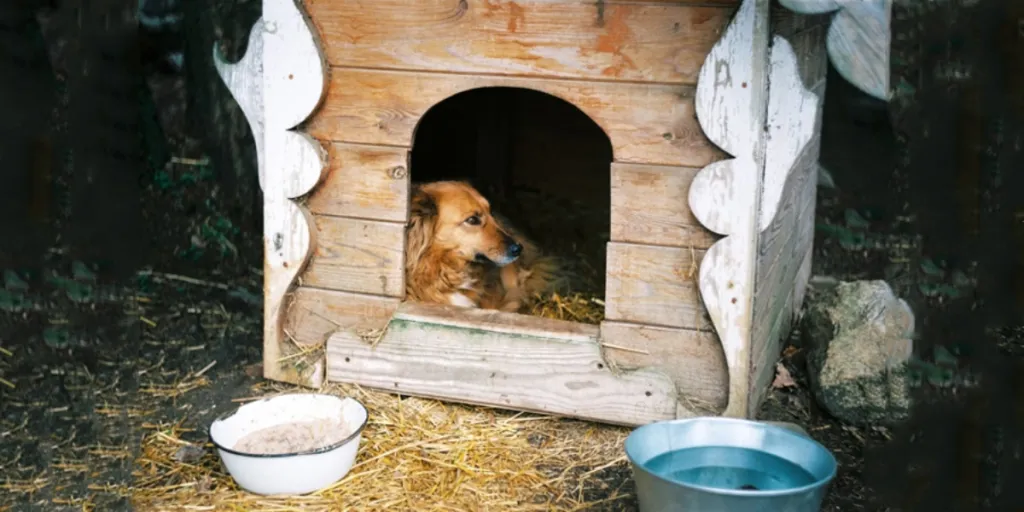Selecting the right heated pet house for any animal comes with a number of considerations to take into account. The most important things to consider are the safety and comfort of the animal, regardless of where their new warm home will be positioned. There are a lot of variations of heated pet houses available on the market, with great features that are adaptable to different sizes of pets.
Keep reading to learn more about the most important features of a heated pet house and what makes them so highly sought after in the winter months.
Table of Contents
Global market value of pet furniture
When is a heated pet house the most popular?
Key features of a heated pet house
Conclusion
Global market value of pet furniture
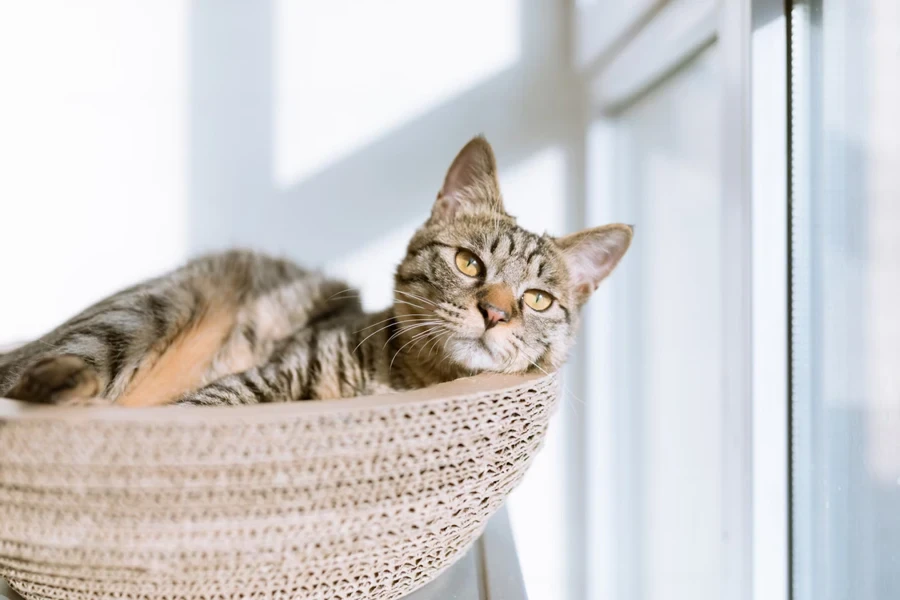
Spending habits among consumers have grown substantially in recent years, with more people having a disposable income to spend on themselves and their families. Pets are treated as family members, so a good portion of this disposable income often goes on pet care and other accessories such as pet furniture or pet toys. Pet beds and a heated version of pet houses in particular are very popular options among consumers who want to give the best pet product to their furry friends for their own comfortable sleeping arrangements.
According to Fortune Business Insights, by the end of 2023, the global market value of pet furniture had reached USD 4.01 billion. It’s expected that this number will steadily increase at a compound annual growth rate (CAGR) of 6.63% between 2024 and 2032. This will bring the total value up to approximately USD 7.07 billion by 2032. Over 35% of the market share will come from North America.
When is a heated pet house the most popular?
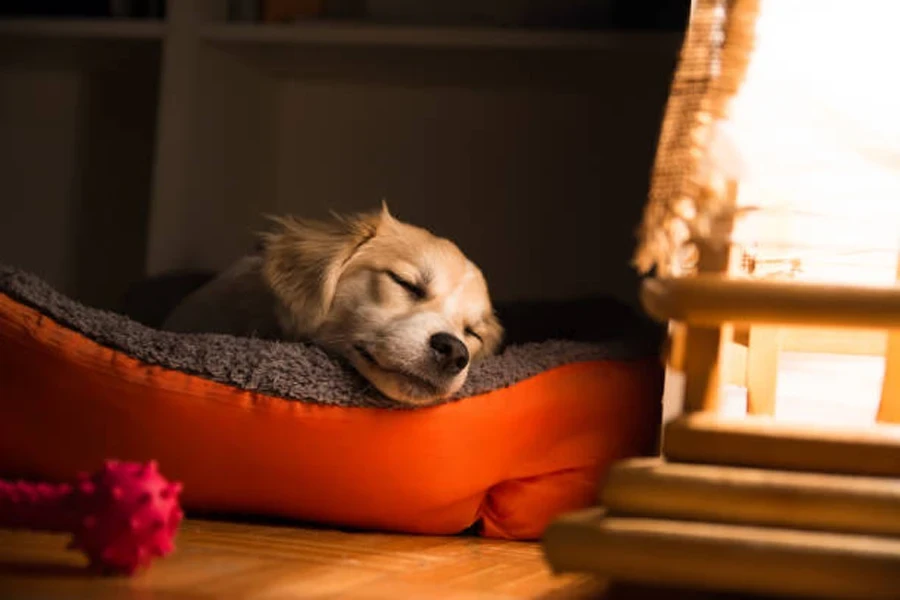
There are certain times of the year when a heated pet house is more popular due to cold weather conditions, when animals require more cozy shelters. These pet houses offer a warm space and are a popular alternative to pets sleeping on porches, in the garage, or on top of warm blankets. Even unheated models will have an included cover to help maintain warmth.
Google Ads reveals that “heated pet house” is the most searched for during December, with 1,600 searches, or 26% of the total annual search volume. This is followed by February, when 21% of searches arise, and November, with 16% of annual searches. January also has a fairly high search volume, with 880 searches in that month.
The remaining months of the year see under 200 searches per month due to the warmer weather, with the exception of March, which sees 320 searches. Although using a heated pet house is seasonally based, it can be a very important piece of pet furniture to own for people who deal with cool temperatures in the winter and who have both small animals and large dogs. Having a larger heated cat house is ideal for customers who have limited space but multiple cats to house.
Key features of a heated pet house
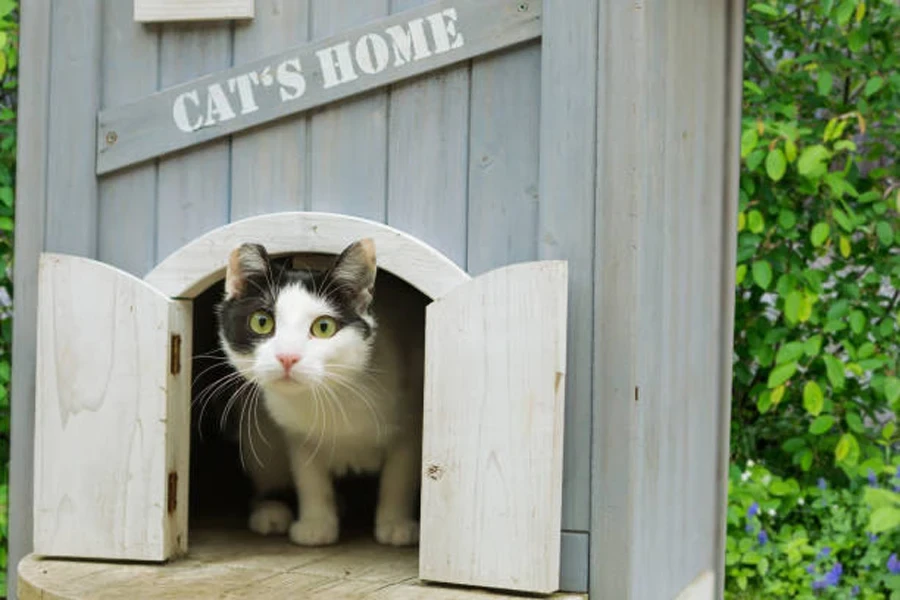
Whether the consumer is looking for a unique cat shelter or a house that includes a pet heating pad for dogs, the following features need to be considered for adequate shelter:
Insulation
One of the most important elements of a heated pet house is the insulation. This has a direct impact on maintaining the pet’s normal body temperature inside the house, and it creates additional comfort for the pet. The materials used should be high-quality, such as foam or reflective foil, which are used as an insulated liner for the roof, floor, and walls. All of these materials trap body heat and prevent cold air from coming inside the structure.
In cold temperatures, it’s a good idea to have a thick insulation wall that will provide more thermal protection and heat anytime. The insulation also acts as a barrier against elements such as heavy rain, snow, and wind so the structure stays dry inside. It’s not uncommon for owners to throw down straw used in barns to help their pets maintain a normal body temperature.
How effective the insulation is depends on how it’s integrated into the design of the heated pet house. The floor of the shelter should be elevated so that the insulation is able to keep the cold from seeping up from the ground, and the door or flaps should also have insulation around them to minimize heat loss.
Some designs will also incorporate double-walled construction into the pet house, which is when an insulating layer is set between two layers of material for enhanced warmth retention and to ensure the waterproof pet house stays dry.
Size and accessibility
The size of a heated pet house needs to match the size of the animal; otherwise, the ability of the structure to retain heat can be compromised. Consumers need to consider the size of the pet as well as its behavior so that unnecessary stress isn’t created. The outdoor shelter needs to have ample space to allow the pet to move freely, but it also shouldn’t have too much additional room, or else the ability to heat it can become compromised.
The entrance to the heated pet house and any rear openings affect the willingness of the pet to use it. It needs to be wide and tall enough to allow for easy access and exits, especially for older dogs who might require a ramp to enter. The entrance should also have weatherproof flaps, such as removable clear plastic flaps, or a door to keep out cold air and rain without hindering the pet’s entry. This helps to maintain the interior temperature as well as increase security.
For heated pet houses that are being used outdoors, it’s a great option to have an elevated entryway, which can help to prevent snow or water from entering.
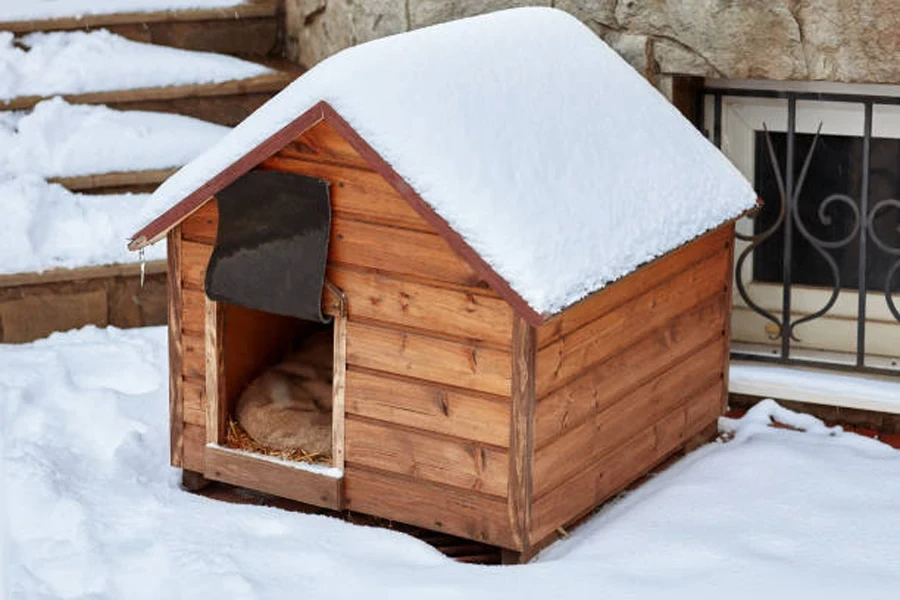
Heating system
The heating system inside a heated pet house typically includes a built-in heated pad or integrated heater that’ll create a warm shelter and a safe place. The heating pad is built inside the floor of the house and is controlled by a thermostat. Some designs may include a controllable heating system as well, but both types need to be energy-efficient and be operated safely with features such as automatic shut-off.
The safest heated pet house models will include a chew-proof cord and grounded plugs to reduce the likelihood of electrical hazards. It’s not advised to have a regular extension cord running through the heated bed. It’s also important that the heated element is properly insulated to prevent direct contact with the pet. Many consumers will look for systems that can be removed within minutes for cleaning purposes and maintenance. The most important things are the comfort of the pet and peace of mind of the owners.

Weather-resistant materials
Having a solid-built product and using weather-resistant materials for a heated pet house is vital for outdoor use. The most commonly used materials are treated wood, composite materials, and heavy-duty plastic, which are all able to withstand harsh weather conditions and are known for their durability.
Both plastic and composite materials are the most popular because they’re unable to absorb water. This means that no mildew or mold will form inside, and when the sun appears, they can naturally absorb heat. Pet houses that are designed using treated wood tend to be coated in weatherproof sealants that provide a natural look while protecting the wood from becoming damaged.
The design of the roof should be sloped to allow snow and rain to slide off and to prevent water accumulation. Seams and joints need to be sealed with waterproof adhesives, which will help to prevent drafts and moisture from coming in. The floor also needs to be elevated and insulated to avoid contact with potentially wet ground during cold snaps. All of these weather-resistant features help to create a protective layer against outdoor weather conditions, and they ensure that the heated pet house remains comfortable and safe.
Conclusion
Consumers who are choosing which heated pet house to purchase will consider the overall safety of their pet as well as the heat retention of the house’s design and the ease of setup. Most heated pet houses will be used outside in colder climates, so ensuring the houses remain sealed and are able to withstand wind, rain, and snow is essential. Pet houses are becoming a popular option for indoor use too, even for small dogs and multiple cats.
The market is expecting more types of pet furniture and unique products to emerge in the next few years, such as outdoor beds, Velcro door flaps, a dog house kit, and high-end versions of a heated cat house.
